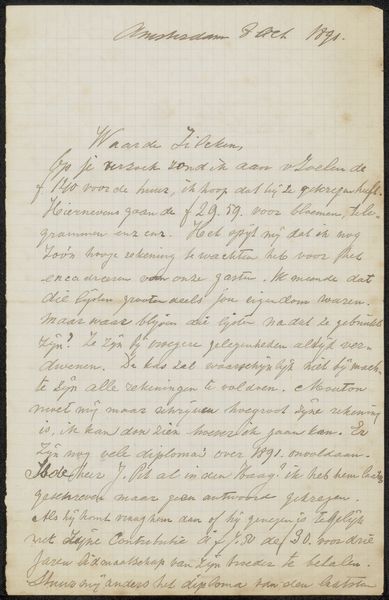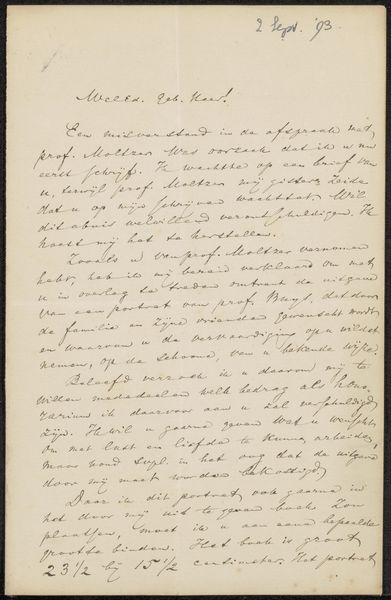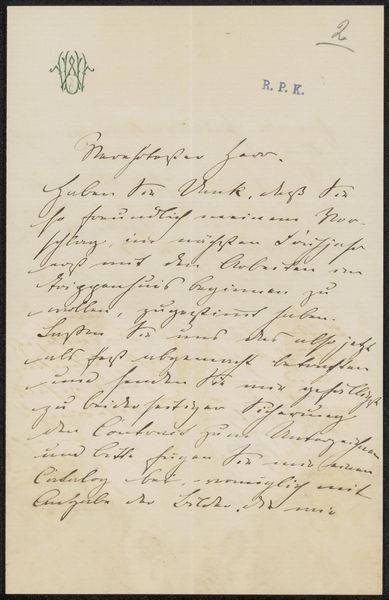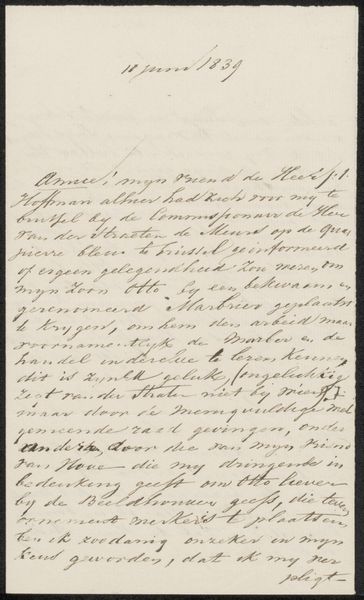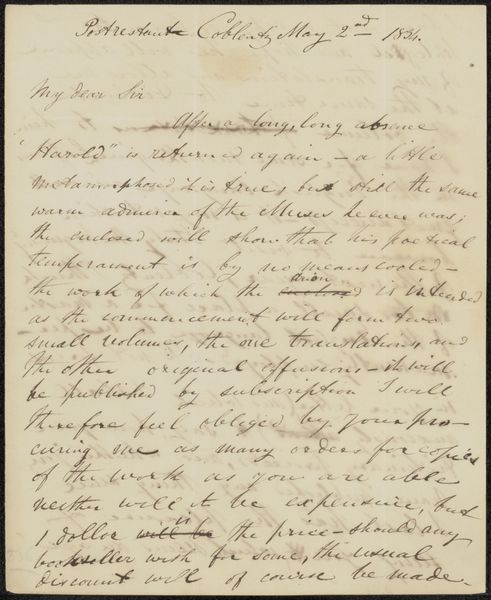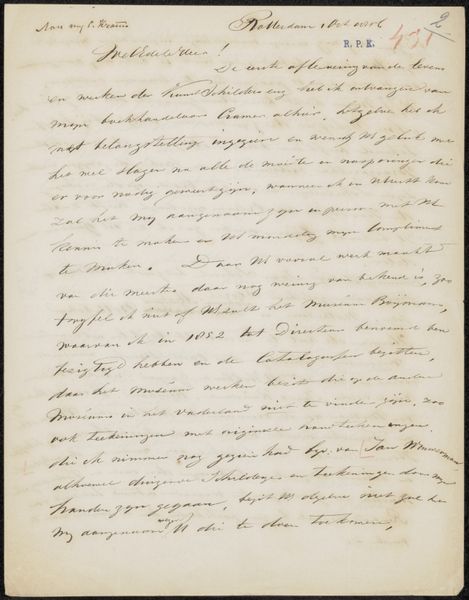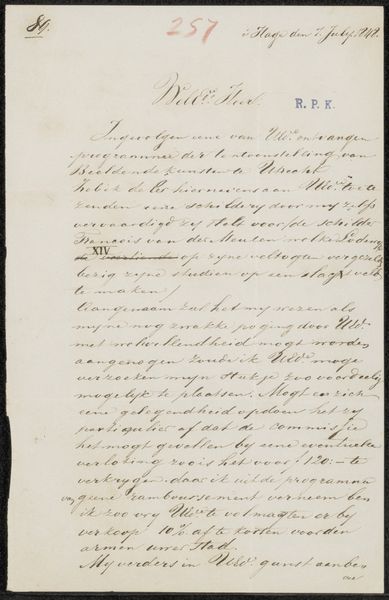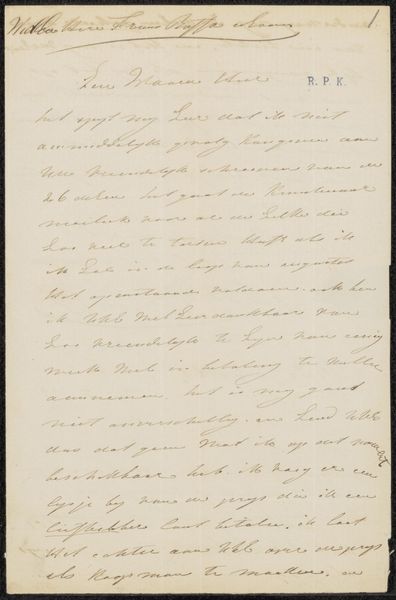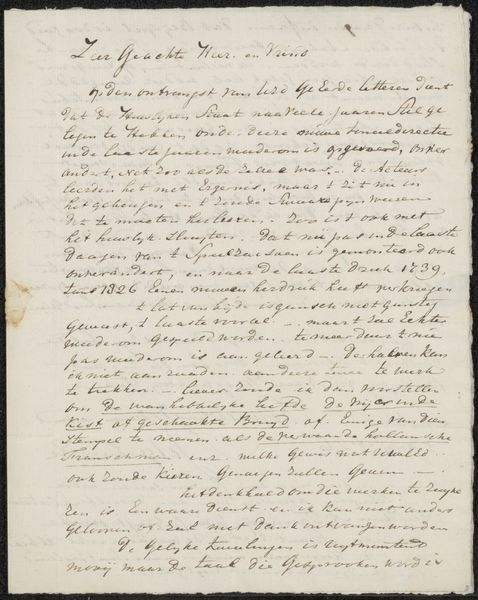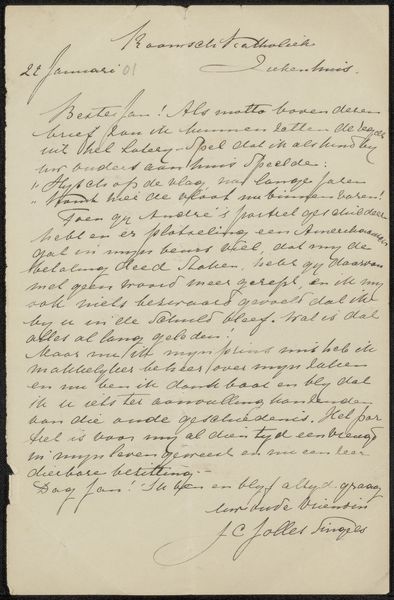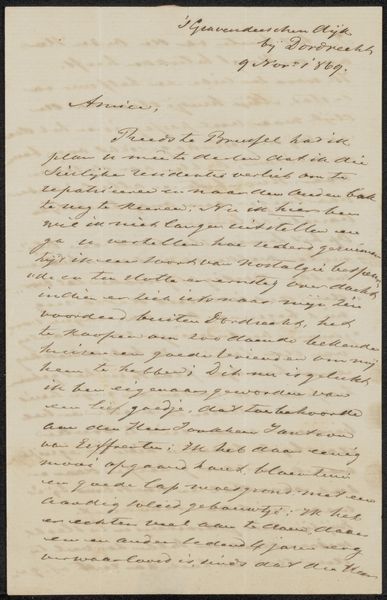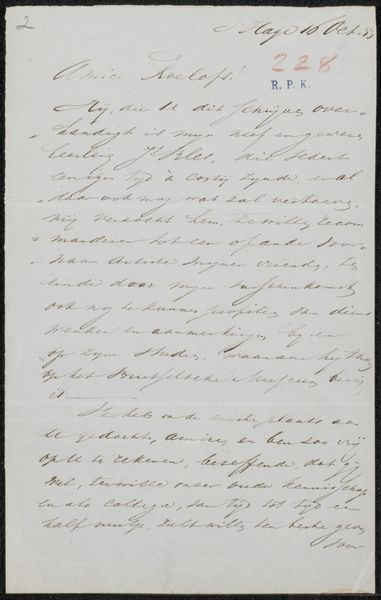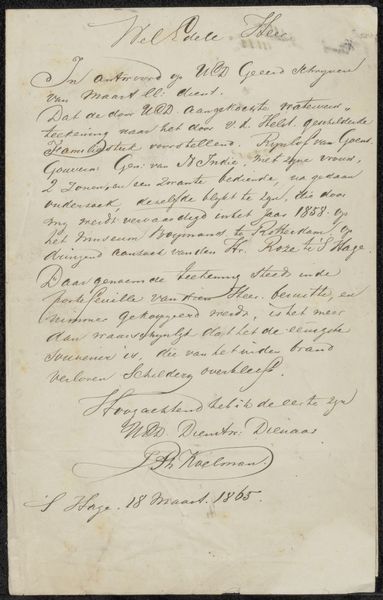
paper, ink, pen
#
paper
#
ink
#
pen
#
calligraphy
Copyright: Rijks Museum: Open Domain
Editor: This is a letter, titled "Brief aan Philip Zilcken," possibly from 1895, created by Johan Marinus Schalekamp. It’s ink on paper, and what strikes me immediately is the intimacy conveyed through handwriting. How do you interpret this work as an art object? Curator: The cultural memory embedded within handwriting is immense. It captures not only information but also the emotional imprint of the writer at a specific moment in time. Look at the elegant, yet hasty, calligraphy—the forward-leaning slant implies urgency. Do you see how the loops and flourishes, while decorative, also serve to connect the words, visually representing the continuous flow of thought? Editor: I do. The consistency almost suggests a professional scribe. How would this artistic approach add to the understanding of cultural identity in that era? Curator: This isn’t just about skill; it’s about the individual's personality seeping through the formal constraints of letter writing. Calligraphy, even in personal correspondence, adheres to established norms, but the writer’s spirit inevitably finds its way into the strokes. In its time, this writing would indicate how cultivated or educated someone might be; now it acts as a historical touchstone, a time capsule for their cultural milieu. Notice the closing words for nuances of emotion as well! Editor: I never considered handwriting as such a rich repository of information and personality. It makes me appreciate how much these aesthetic and gestural cues inform an understanding of the individual in that era. Thank you for the added insights! Curator: Absolutely, considering writing style offers another angle for understanding history. Every mark holds echoes.
Comments
No comments
Be the first to comment and join the conversation on the ultimate creative platform.
